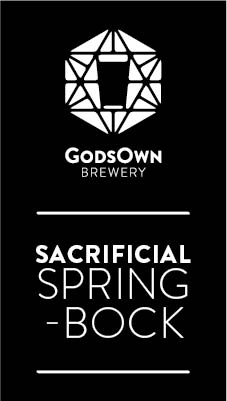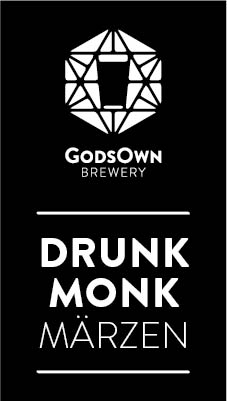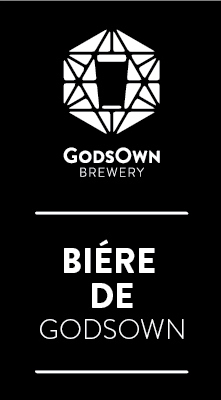Spring Range
M
Sacrificial Springbock
The origins and development of the style “bock” began not in Munich but in Northern Germany in a town called Einbeck in Lower Saxony. Einbeck joined a group of cities known as the Hanseatic League. Together they controlled most trade inside present day Germany and between that area and other countries during the Middle Ages. The chief exports being beer, wine and linen. At its height, brewing was the primary economic activity of Einbeck, and the mayor was the chief brewer.
They were famous for the development of the Bock beer. A bock beer is stronger-than-average beer, generally amber in colour (although pale versions do also exist) and traditionally drunk in Spring (which is why it is sometimes referred to as Maibock). Their success spanned at least three centuries, but Einbeck was not destined to remain a permanent fixture in the world of brewing as it was ravaged by fire during the 16th century and during the Thirty Years’ War which is said to have ended the brewing trade in Einbeck.
This ultimately led to the Munich Transformation, where Munich brewers “bent all their energy to brewing a beer as good as that of Einbeck.” This led to a version which was sweeter in balance and was enjoyed by the citizens of Munich which soon replaced the original, as a result of the war.
Bock means goat in German, and it’s not surprising that someone drinking this beer would feel a “kick” and make a verbal connection forming a strong association between bock beers and goats.
Here at GodsOwn Brewery we have embarked on a Kiwi Transformation of this style of beer; year one, keeping with the sweeter balance of barley malts of Munich but utilising NZ variety noble hops, namely Pacifica and Wakatu. Year two …. We will let you know
We found this historical record of the character of this beer:
“This delicious, palatable, subtle, extremely sound and wholesome beer, wherewith a man, when partaken of in moderation, may save his health and his sound senses, and yet feel jolly and stimulated” quoted by J. Letzner from his Chronicle, on the beer of Einbeck.
We sincerely hope we live up to this expectation laid forth by the good man Letzy? By producing our first release of a golden clear “Springbock”. With a big white head delivering a full-bodied and sweet but nicely balanced and clean taste. Exploding with aromatic malts and flowery kiwi hop flavours, reminiscent of honey-melon fruitiness.
Grain Bill: Pilsner Malt, Munich Malt, Dark Munich Malt, Cara-hell and Belgian Aromatic Malt
Hop Bill: Pacifica and Wakatu
Yeast: Wyeast Munich Lager
Year: 2016
OG: 1.072 FG: 1.022 IBU: 32 ABV: 6.6%

Drunk Monk Marzen
The Vienna style of beer suffered during the early twentieth century due to war, prohibition and economic depression which affected all brewers and virtually eliminated the classic Vienna style from commercial production.
As a result Vienna Lager was on the decline, but the Marzen style appeared to be on the rise and brewers both from Vienna and Munich started producing beers called Marzen. Many Munich and Bavarian breweries can trace their roots back several centuries, with the strongest influence on this style been accredited to Gabriel Sedlmayr, based on an adaptation of the Vienna style.
Today the styles of Vienna, Marzen and Oktoberfest beers are known as the VMO category, whereby the Marzen and Oktoberfest style beers are terms frequently used together. These two German words contain the names of two months, namely March and October.
The Oktoberfest celebration originated in 1810 not as a beer festival but as a wedding celebration for the Crown Prince of Bavaria. The term “Oktoberfest” has evolved as the name applied to special beers brewed for that celebration. Whereas the origins of Oktoberfest can be traced to a specific year, the word “Marzen” has been used to describe some beers for hundreds of years.
Before the advent of refrigeration, it was not possible to brew successfully in the summer months, when spring began to arrive, brewing would cease until autumn, when cooler temperatures returned whilst been stored in cool cellars or caves. Over the summer months, beers that had been made in the cool months of the year were consumed. As a result of these efforts, the last beers brewed each Spring took on special identity, and they were named Marzen or March beers, after the month in which most were brewed.
Here at GodsOwn we too follow this tradition by brewing and cellaring our Marzen during winter; ready for spring and summer for consuming this smooth, clean and creamy bodied rich German lager with initial sweet but soft maltiness, finishing dry with moderate hop flavour.
Grain Bill: Pilsner Malt, Vienna Malt, Munich Malt and Cara-Munich Malt Type II&III
Hop Bill: Northern Brewer, Magnum, Tettnang and Hallertau Herbrucker
Yeast: Wyeast Oktoberfest Lager
Year: 2016/2017
OG: 1.052 FG: 1.011 IBU: 27 ABV: 5.5%

Biere De Godsown
The farmhouse heritage of French biére de garde is well established however, documented historical information is scarce. References to biére de garde or “old beer” exist in a few historical accounts.
In the late 18th century and into the early 19th century biére de garde of Northern France was referenced as “purposely allowed to become acid and at the same time acquiring a vinous flavour” and was aged in large, wooden barrels for six to eight months before serving and “on occasion was blended with new beer” in order to stretch supplies (or to dilute sour, old-tasting beer, presumably).
No doubt the beer would pick up an oxidized flavour in the cast and more than likely experience secondary (lactic) fermentation, resulting in a sour character.
The higher alcohol content of today’s biére de garde is almost certainly in contrast to the old farmhouse versions, as a stronger beer was more of a relaxant than a refresher. Evidence shows that farmhouse brewers made lower gravity ales for immediate consumption during the season, then switched to stronger ales toward the end of the brewing season.
These were intended for longer-term storage as provisions for the warm weather months. The higher alcohol content of these “provision beers” would have helped provide stability during months of storage or “garding”.
As refrigeration technology became commonplace in small breweries, the practise of seasonal brewing of stronger ales or biére de garde started to become obsolete. These ales largely faded from view as did the older drinkers who may have favoured these stronger, more flavourful ales. Therefore, the richer, darker farmhouse-style ales were replaced by the lighter lager beers that were becoming increasingly popular through France.
The French specialty brewing movement began in the late 1970s when many small independent breweries began to realise that they could not compete with large scale industrial brewers by brewing Pilsener and other “generic” lager styles and thus began searching for niche speciality products to brew and market. Biére de garde became the focal point of that effort. Modern biére de garde may have evolved from the tradition of making a seasonal ale with origins similar to German Oktoberfest Márzen. Brewed in winter when the temperature was cooler, it was released in Spring.
The small brewer used different yeasts depending on what they could find nearby and on the result they wished to obtain, thus both top and bottom fermenting yeast was often used. They would make beers that were stronger, darker in colour and bigger in character but with a cleaner, less estery profile and an extended cold maturation period.
Here at GodsOwn we have brewed our first biére de garde with the use of speciality malts to yield a greater complexity and depth of malt flavour and with the use of French & German Noble Hops and French Ale yeast, to deliver a fairly strong, malt-accentuated ale which is malty yet dry, with clean flavours and a smooth character.
Grain Bill: Pilsener Malt, Munich, Aromatic, Biscuit and Black Patent Malts
Adjuncts: Cane Sugar
Hop Bill: Spalt Select and Strisselspalt
Yeast: White Labs French Ale Yeast
Year: 2017
OG: 1.069 FG: 1.007 IBU: 22 ABV: 8.2%